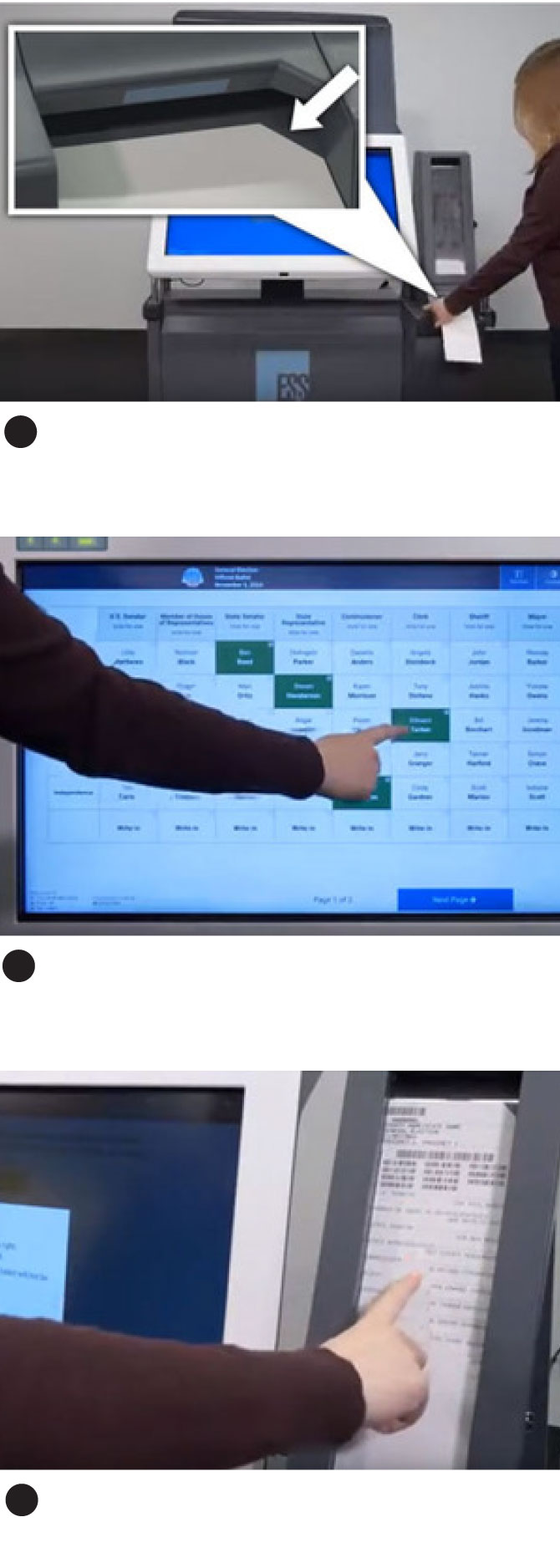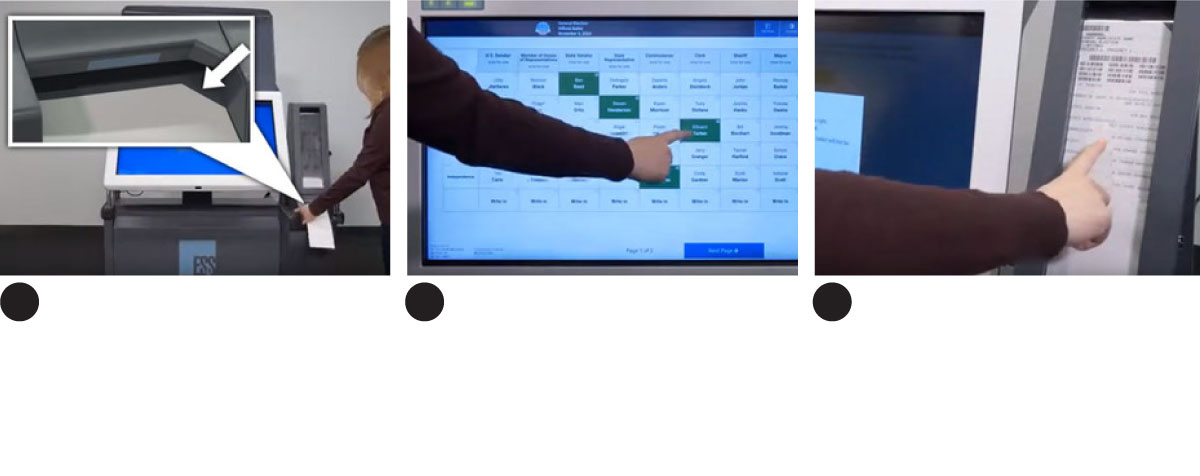These Activists Distrust Voting Machines. Just Don’t Call Them Election Deniers.
As election activists rally against new voting machines, they are drifting into territory now dominated by conspiracy theorists.
For decades, Lulu Friesdat made election integrity her life’s work. Drawing support from activists and academics, she co-founded Smart Elections, a nonpartisan group that is opposed to some voting machines that Ms. Friesdat believes would increase wait times and cost a small fortune to purchase and maintain.
But since 2020, things have changed. Former President Donald J. Trump catapulted concerns about voting machines into the Republican mainstream by falsely claiming that the 2020 election was rigged, partly because of electronic voting machines.
Election integrity advocates, like Ms. Friesdat, now find themselves in an uncomfortable position, pushing for election security while sometimes amplifying claims made most vocally by conspiracy theorists, including those involved in the so-called Stop the Steal movement.
Some election activists warn that election machines could be hacked or compromised, for example, while some conspiracy theorists say, without evidence, that those hacks have already taken place. Election officials say no hacks have taken place.
Misinformation watchdogs say that the somewhat overlapping arguments illustrate another consequence of Mr. Trump’s false and exaggerated voter fraud claims, which have led to doubts about election integrity among a wide swath of the American public. Ms. Friesdat and other activists like her fear that their work may become too closely tied to conspiracy theorists and Mr. Trump’s cause, making potential allies, like progressives, wary of joining the fight.
“If you read an article that says that these voting machines are coming in, and people’s concerns about these issues are very similar to those of the Stop the Steal movement, then it makes it very hard for Democrats to work on this issue,” Ms. Friesdat said. “And it has nothing to do with that. It has nothing to do with the Stop the Steal movement.”
Misinformation watchdogs say that the two movements could erode trust in American elections even further, intentionally or not, because conspiracy theorists tend to exaggerate legitimate criticisms to rile up supporters and raise questions about the entire electoral system.
“You sow a seed of doubt, and that will grow and fester into a conspiracy theory,” said Tim Weninger, a computer science professor at the University of Notre Dame who studies misinformation on social media. “It always starts off with one untruth, and that grows into two untruths, and that grows into more, and before long you have an entire conspiracy theory on your hands.”
The debate has played out nationally as multiple states have faced pushback on electronic voting machines. It is now happening in New York, where officials are considering certifying new voting machines made by Election Systems & Software, a manufacturer based in Omaha. The company has been targeted in Mr. Trump’s voting fraud narrative, alongside competitors like Dominion Voting Systems and Smartmatic. Yet, ES&S and its machines have also come under scrutiny by election activists and security experts.
The new machines, ExpressVote XL, use an “all-in-one” design: Voters make their selections on a 32-inch touch-screen, which also prints their votes on a narrow summary card. Unlike a traditional ballot, the card records the votes in bar codes at the top of the paper, which the machine reads electronically, followed by a written summary of each pick.
How the ExpressVote XL Works
Images shared by the Pennsylvania government show how the ExpressVote XL uses summary cards instead of traditional ballots.
#g-expressvotexl-box , #g-expressvotexl-box .g-artboard { margin:0 auto; } #g-expressvotexl-box p { margin:0; } #g-expressvotexl-box .g-aiAbs { position:absolute; } #g-expressvotexl-box .g-aiImg { position:absolute; top:0; display:block; width:100% !important; } #g-expressvotexl-box .g-aiSymbol { position: absolute; box-sizing: border-box; } #g-expressvotexl-box .g-aiPointText p { white-space: nowrap; } #g-expressvotexl-335 { position:relative; overflow:hidden; } #g-expressvotexl-335 p { font-family:nyt-franklin,arial,helvetica,sans-serif; font-weight:300; line-height:19px; height:auto; opacity:1; letter-spacing:0em; font-size:16px; text-align:left; color:rgb(0,0,0); top:1.3px; position:static; text-transform:none; padding-bottom:0; padding-top:0; mix-blend-mode:normal; font-style:normal; } #g-expressvotexl-335 .g-pstyle0 { height:19px; position:relative; } #g-expressvotexl-335 .g-pstyle1 { font-weight:700; line-height:12px; height:12px; font-size:14px; text-align:center; color:rgb(255,255,255); top:1.1px; position:relative; } #g-expressvotexl-600 { position:relative; overflow:hidden; } #g-expressvotexl-600 p { font-family:nyt-franklin,arial,helvetica,sans-serif; font-weight:300; line-height:19px; opacity:1; letter-spacing:0em; font-size:16px; text-align:left; color:rgb(0,0,0); text-transform:none; padding-bottom:0; padding-top:0; mix-blend-mode:normal; font-style:normal; height:auto; position:static; } #g-expressvotexl-600 .g-pstyle0 { font-weight:700; line-height:12px; height:12px; font-size:14px; text-align:center; color:rgb(255,255,255); top:1.1px; position:relative; } #g-expressvotexl-900 { position:relative; overflow:hidden; } #g-expressvotexl-900 p { font-family:nyt-franklin,arial,helvetica,sans-serif; font-weight:300; line-height:19px; height:auto; opacity:1; letter-spacing:0em; font-size:16px; text-align:left; color:rgb(0,0,0); top:1.3px; position:static; text-transform:none; padding-bottom:0; padding-top:0; mix-blend-mode:normal; font-style:normal; } #g-expressvotexl-900 .g-pstyle0 { height:19px; position:relative; } #g-expressvotexl-900 .g-pstyle1 { font-weight:700; line-height:12px; height:12px; font-size:14px; text-align:center; color:rgb(255,255,255); top:1.1px; position:relative; }

Voters insert the provided summary
card into the machine.
1
Voters make their selections using
the touch screen.
2
Their selections are printed on the
summary card, which voters verify.
3

1
2
3
Voters insert the provided summary card into the machine.
Voters make their selections using the touch screen.
Their selections are printed on the summary card, which voters verify.

Voters insert the provided summary
card into the machine.
Voters make their selections using
the touch screen.
Their selections are printed on the
summary card, which voters verify.
1
2
3
Ms. Friesdat and good-government groups like Common Cause, a nationwide watchdog focused on government accountability, have campaigned against the machines for years, saying they are costly and could lengthen voter lines. They also warn that voters may not always consult the summary cards, causing mistakes to sneak through.
But they have sometimes gone further, wandering into territory now dominated by conspiracy theorists. In one Facebook post, Smart Elections wrote that the machines can “add, delete, change votes on your ballot” — a claim nearly identical to those made by election deniers after the 2020 election.
ES&S wrote in an emailed statement that its machines were secure and that voters managed to complete their ballots quickly. It emphasized the ExpressVote XL could handle multiple languages at once and support voters with disabilities. Though the company said the machines cost about $10,000 each, on average, it added that states would save money over time because they would not have to preprint traditional ballots in multiple languages and because the new equipment would eliminate redundancies.
The machine is widely expected to be certified soon in New York after enduring a rigorous third-party security assessment.
ES&S has used the claims about potential hacks to attack those opposed to adopting its machines. ES&S said that the fear that its machines could get hacked is “a conspiratorial claim used in the aftermath of 2020.” It threatened to sue Smart Elections, calling its claims about the machines “false, defamatory and disparaging.”
Smart Elections responded that its views were backed by experts and otherwise protected as opinion.
The fear of hacking remains the most extreme risk highlighted by election activists, and it is among the false explanations offered by election deniers for how President Biden won in 2020. Election security experts say that election officials must behave as though a hack is possible, creating audits and transparent processes that allow vulnerabilities to be detected and fixed before they are exploited.
But there was no evidence that the 2020 election was influenced by hacking or compromised machines, and many officials said the threat of hacking should not be blown out of proportion.
“I compare it to saying that the gold stored in the basement of the Federal Reserve Bank on Wall Street is subject to be stolen,” said Douglas Kellner, a co-chair of the New York State Board of Elections, which is responsible for ultimately certifying the machines.
“Theoretically, if you aligned all of the attack elements against the numerous security protocols it would be theoretically possible to steal the gold out of the Federal Reserve,” Mr. Kellner said. “But it’s not particularly realistic.”
This article has been archived for your research. The original version from The New York Times can be found here.


